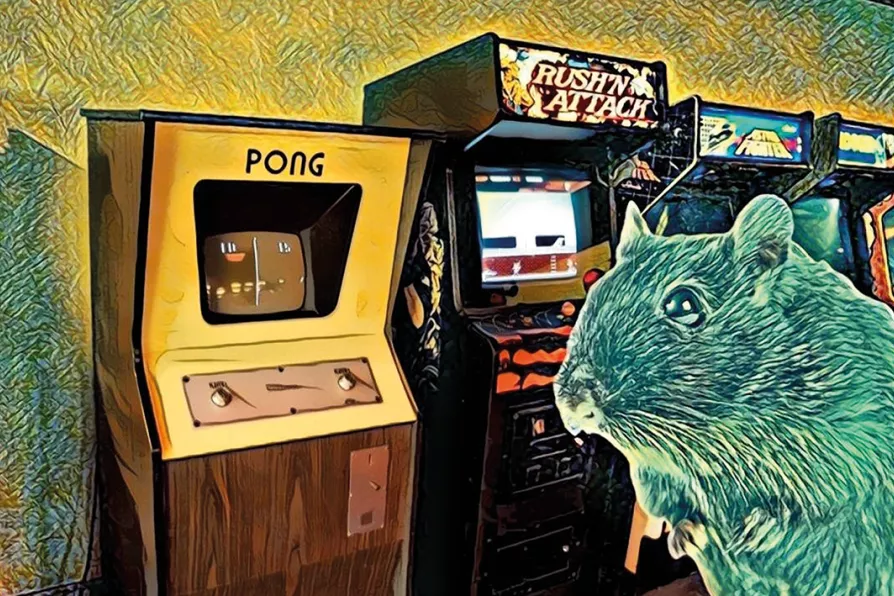As Labour continues to politically shoot itself in the foot, JULIAN VAUGHAN sees its electorate deserting it en masse


TO perform the experiment, cortical cells taken from the brains of rodent embryos were placed in a vat of nutrients in which they grew into a dense, complicated network. This network resembles a very scaled-down version of the network of neurons that comprise our own brains.
Performing the same process with human neurons requires an extra step, since there are further ethical considerations for direct collection and use of human tissues.
Consensually collected human cells such as red blood cells can be “reversed” into pluripotent stem cells, the initial form that all human cells take before they begin to specialise into things like skin, muscle, or bone. These stem cells are then triggered into changing into human neurons and are grown into dense networks the same way as the mice neurons.
The neurons were grown on very fine grids of electrodes that can record the chains of electrical signals that fire along connected neurons, as well as send external electrical signals into the network. The result is a two-way interface between the network of neurons and a computer system.
The computer system was programmed to run a one-player version of the game Pong, where you move a paddle up or down to bounce a ball against a wall on the opposite side of the screen. The computer sends signals into a specific region of the neuron network and interprets any signals in two different regions as requests to move the paddle up or down.
The computer communicates sensory information such as ball location on the y-axis or ball speed into the network. The hope was that the network of neurons would learn to interpret this information and respond by moving the paddle in the correct direction.
However, the neurons need a reason to care about this sensory information that they are receiving: without any feedback on their performance could the neurons learn? This is where the scientists made use of a specific theory of how intelligent behaviour emerges, pioneered by senior author on the paper Karl Friston.
Friston is a theoretical neuroscientist based at University College London and is a leading proponent of what he has called the “free energy principle.”
This principle states that systems in an environment, such as the neurons being “embedded” in the game of Pong, try to make the most accurate predictions about their environment and minimise the “surprise” involved in getting predictions wrong.
After making an incorrect prediction the system either updates its beliefs or acts to change the environment in which it exists to make its current belief more correct.
In line with this theory the scientists provided unpredictable feedback of random signals — akin to “surprise” — when the ball went past the paddles and predictable feedback of identical signals when the ball was returned off the paddle.
They hypothesised that the neurons would try to avoid the unpredictable feedback by changing the network to process the sensory information provided by the computer in such a way that they then acted upon their environment, interacting with the electrodes required to move the paddles, and over time “learning” to move the paddles in the correct direction.
The scientists let several different versions of the neuron networks play the simplified version of Pong and recorded metrics about how well they played over time.
To test some of their hypotheses they also tried out some “control” experiments. These included an electrode plate with no neurons on it, some neurons that could control the paddle but received no sensory information and a computer simulation that moved the paddle around completely randomly.
All of these experimental set-ups performed similarly well to begin with. But only the neurons provided with information from the computer improved over time.
The neurons never became masters of Pong. In fact, they remained terrible: their average rally length barely scraped above one hit by the end of the 20-minute session. However, statistical analysis indicated that this was a small but statistically significant increase in performance. It wasn’t seen in the other set-ups.
The scientists also were able to show that only neurons that received some sort of feedback improved over time, indicating that the feedback was in some way necessary for the neurons to improve.
The human neuron networks outperformed the mice neuron networks. The scientists suggested this indicates greater computational abilities in human neurons, but this is a tiny experiment and drawing such conclusions seems very premature.
While the researchers seem to have provided the first example of an artificial biological neural network adapting in real time, much more work must be done to understand whether we think that the neurons have “learned” or are “sentient” in any meaningful sense.
The authors define sentience as being “responsive to sensory impressions through adaptive internal processes” — something quite distinct from, as Wikipedia puts it, “the capacity to experience feelings and sensations.”
The difficulty with these mini-brains in a vat is that they are such a long way away from an organism with a brain. We have to interpret their response to the stimuli we provide them.
Even though in this scenario the random feedback seemed to make the system’s performance at Pong improve, does it make sense to talk of the neurons “learning” and “trying to avoid surprise?”
It is also unclear exactly when adapting internal processes in response to stimuli constitutes learning. Plants have adapted to best grow towards the sun. Would we be happy to say that they have learned to do this in the same way that a person might learn to play the drums?
There is a tension in matching our language, loaded with meanings, to these phenomena. Should we guard the boundaries of “sentience” to never let in the neurons — or change our definitions accordingly?
The researchers should be commended for the technical intricacy of integrating neurons with computer hardware to allow this kind of research to take place. But these are very early days.
There should be patient and careful interpretation of what the results mean in terms of sentience and learning. One-paddle hit every 20 minutes in the simplest video game ever means there is still a long way to go to prove that avoiding “surprise” underpins the behaviour of all biological systems.

The distinction between domestic and military drones is more theoretical than practical, write ROX MIDDLETON, LIAM SHAW and MIRIAM GAUNTLETT

Nature's self-reconstruction is both intriguing and beneficial and as such merits human protection, write ROX MIDDLETON, LIAM SHAW and MIRIAM GAUNTLETT

A maverick’s self-inflicted snake bites could unlock breakthrough treatments – but they also reveal deeper tensions between noble scientific curiosity and cold corporate callousness, write ROX MIDDLETON, LIAM SHAW and MIRIAM GAUNTLETT
Science has always been mixed up with money and power, but as a decorative facade for megayachts, it risks leaving reality behind altogether, write ROX MIDDLETON, LIAM SHAW and MIRIAM GAUNTLETT














